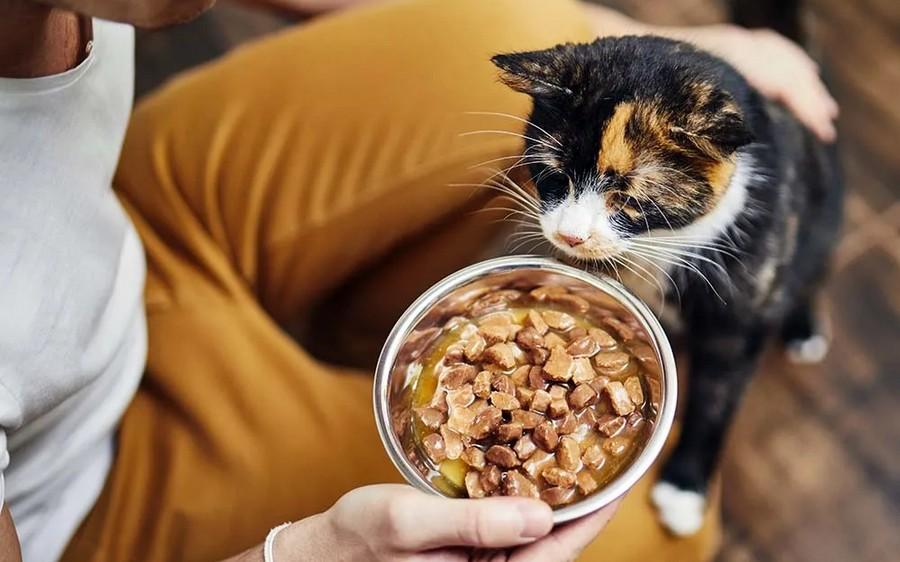Ever wondered why your senior cat turns their nose up at a perfectly good meal from time to time? You checked the expiration, inspected it for unwelcome bacteria, and still, your cat would rather turn their nose up than return to their regularly scheduled programing. Well, insights from a new Waltham Petcare Science Institute study may have uncovered the key to your cat's sudden aversion to mealtime, and it could be as simple as warming their food.
Just like we wouldn't regularly pick a gaspacho over a warm lentil soup in the winter, our cats may be craving the same comfort of hot — or at least warm — meals. My research team at Waltham wanted to find out if the temperature of wet food could make it more alluring to senior cats, and if so, understand why. As they age, the sensitivity of senses like taste and smell (among others) are thought to decline. Both senses are important drivers of appetite, which is why it can be challenging to encourage older cats to eat the food they need to help maintain their body weight.
Warm Cat Food for the Win
Warming the food made a significant difference to the amount of food that the cats ate. In the study, published in the Journal of Veterinary Behavior, my team offered the cats (all over seven years old) the same wet food, but at different temperatures. The chilly option was 6⁰C (43⁰F), which is similar to the food that has been kept in a fridge.
The second option was served at 21⁰C (70⁰F) to reflect room temperature and food that is usually served from a pouch stored in a cupboard. The final offering was at 37⁰C (98⁰F), like the body temperature of their prey. The cats' top preference was the food at 37⁰C. Their second preference was at room temperature, and they ate the least amount of food offered when at 6⁰C.
Complete and balanced cat food contains all the nutrients in the correct amounts to help maintain their health. That means ensuring that older cats tuck into and finish their dinner is an important part of supporting their needs as they age. You know what they say about senior citizens retiring to Florida for the balmy weather. Well, now you can help make mealtime easier for your older, fussy cat by offering them the same warmth they (sometimes) offer you. Tiny cocktail umbrella optional.
Tips to Encourage Eating
Avoid serving cat food straight from the fridge. Purchasing pet food in cans can offer the best value. However, when caring for a cat, each meal will only be a portion of the can, requiring the open tin to be stored in the fridge for freshness. To avoid plating-up a chilly offering, put the meal portion in a bowl and leave at room temperature until the food has warmed before giving to your cat.
Try warming the food above room temperature. For the tastiest meal, try warming the food. You can place the food container in a pan of warm water, or gently heat it up in a microwave using a microwave-safe container. Make sure the food is only warm to touch, and not hot, which could harm your cat.
Why Senior Cats Prefer Warm Food
There are several factors influencing the amount of food that cats eat: aroma, taste, texture, appearance, and composition. We used the same product for the study, which means the food's appearance and composition didn't change. We also also measured the consistency of the gravy in the food and found no change to it when heated. So what could be driving the differences?
There may be two different areas that could come together to drive the preference we found in the cats — evolution and food chemistry. Part of the study was to help understand what changes in the food and its aroma as it is heated. We found, for example, that more sulphur-containing compounds were released at 37⁰C. From our previous studies in food chemistry, and from the results published by other academics, we know that these compounds are extremely important in meat flavor — so they could make the difference to the pets.
The other area that may be important links to cats' natural and wild predatory instincts. They may have evolved to prefer food at body temperature, which could be an indicator to them that the prey is fresh or has been recently caught.
by SCOTT MCGRANE, DVM - The wildest
You could be interested: Palatability: The importance of flavor in pet nutrition













































